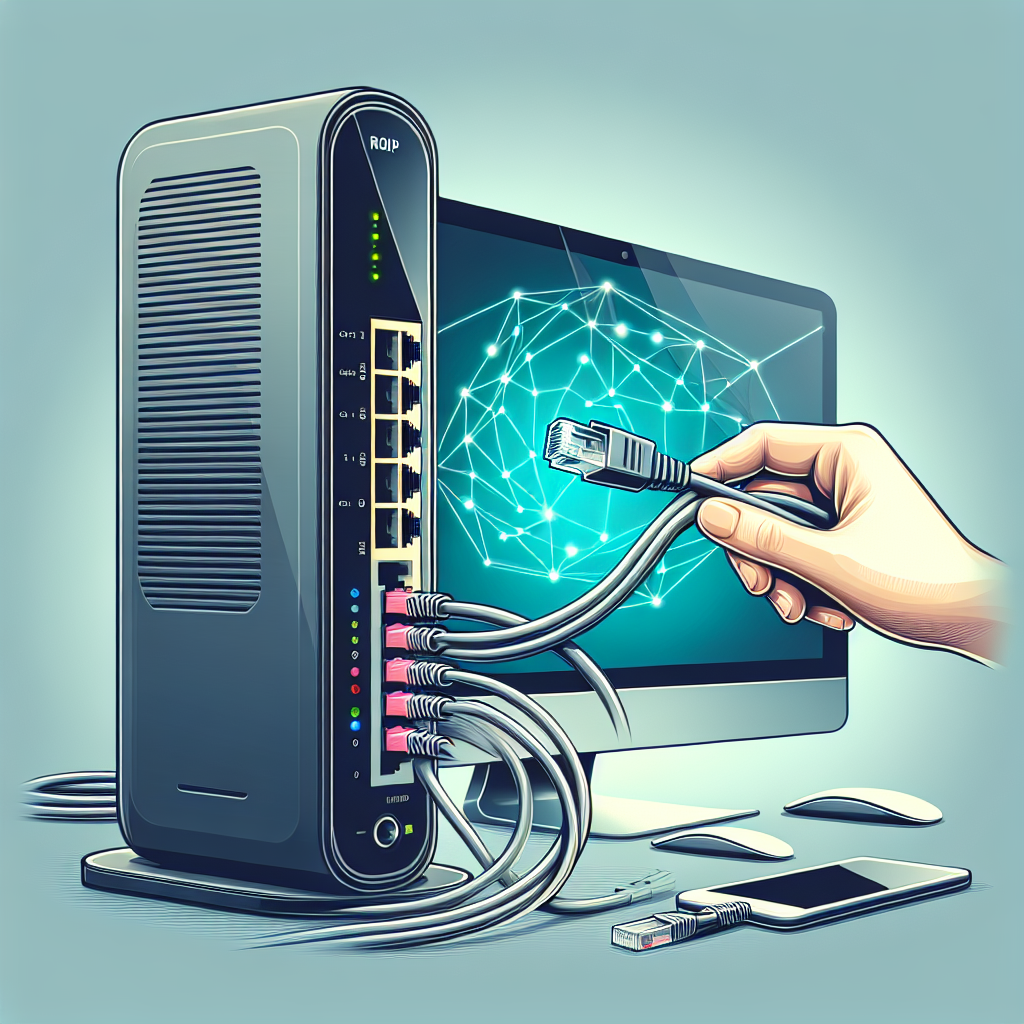Creating a wired connection using your router is a straightforward process that ensures a stable and faster internet connection compared to wireless setups. This article provides a step-by-step guide on how to do this effectively.
What You’ll Need
- Router
- Ethernet cables
- Modem (if not integrated with your router)
- Computers, gaming consoles, or other devices that support Ethernet connections
Step-by-Step Guide to Setting Up a Wired Connection
Step 1: Gather Your Equipment
Ensure you have all the necessary equipment listed above.
Step 2: Place Your Router
Ideally, place your router in a central location in your home for optimal coverage. Ensure it’s near a power outlet and your modem if you have a separate one.
Step 3: Connect Your Router to the Modem
Use an Ethernet cable to connect your modem to the WAN or Internet port on your router. This setup allows the router to distribute the internet signal to all connected devices.
Table of Common Router and Modem Ports
| Device | Port Name | Function |
|---|---|---|
| Router | WAN/Internet | Connects to the modem for internet access |
| Router | LAN | Connects to devices via Ethernet for network access |
| Modem | Ethernet | Connects to the router to provide internet access |
Step 4: Power On Your Devices
Plug in your modem and router to their respective power outlets and turn them on. Wait for them to fully initialize. This process might take a few minutes.
Step 5: Connect Devices to the Router
Use Ethernet cables to connect your devices (computers, gaming consoles, etc.) to the LAN ports on the router.
Steps for Different Operating Systems
- Windows: Plug the Ethernet cable into your computer’s Ethernet port. Go to Control Panel > Network and Sharing Center > Change Adapter Settings to ensure the connection is established.
- Mac: Connect the Ethernet cable to your computer’s Ethernet port. Go to System Preferences > Network to check the connection status.
- Gaming Consoles: Connect the Ethernet cable to the console’s Ethernet port. Follow the on-screen setup instructions to establish the connection.
After completing these connections, your devices should automatically detect the wired connection and configure the internet settings accordingly.
Advantages of a Wired Connection
- Stability: Wired connections provide a more stable connection with less interference compared to wireless options.
- Speed: Typically faster speeds, especially for activities that require a lot of bandwidth, such as online gaming and streaming.
Troubleshooting Common Issues
Connection Drops
If you experience connection drops, ensure all cables are securely plugged in and in good condition. Try rebooting your router and modem.
Slow Speeds
For slow speeds, check if your Ethernet cables support your internet speed. CAT5e or higher cables are recommended for high-speed connections.
Device Not Recognized
If a device isn’t recognized, ensure it’s configured to receive an IP address automatically (DHCP setting) and check for any firewall settings that might be blocking the connection.
Conclusion
Setting up a wired connection using your router is a simple process that can significantly improve your internet’s stability and speed. By following this guide, you can ensure a reliable connection for all your wired devices.

